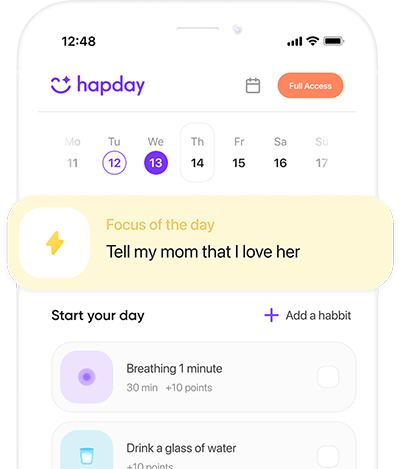Life is full of twists and turns, and while we can’t predict every challenge children and teenagers will face, we can help them build the resilience to handle setbacks, adapt, and grow stronger through adversity. Resilience isn’t about shielding young people from challenges; it’s about equipping them with the tools and mindset they need to navigate those challenges with confidence and optimism.
Research consistently shows that resilience is a key factor in long-term well-being. A study published in the Journal of Youth and Adolescence found that resilient teens experience 20% higher levels of life satisfaction and are 40% less likely to develop symptoms of depression and anxiety compared to their peers. With resilience, young people can bounce back from setbacks, learn from difficult situations, and approach life with a healthier perspective.
In this guide, we’ll explore what resilience really means for children and teenagers, why it matters, and practical, research-backed strategies parents and educators can use to foster resilience at every stage of development.
Understanding Resilience: What Does It Mean?
Resilience is the ability to recover and adapt in the face of adversity. It’s the quality that allows children to handle stress, face challenges head-on, and keep going even when life doesn’t go as planned. Resilience doesn’t mean children won’t feel pain, frustration, or disappointment—it means they have the inner strength to navigate those emotions and eventually move forward.
Why Resilience Matters
Resilience acts as a psychological shield, providing young people with a sense of self-worth, optimism, and determination. Studies have found that children who develop resilience are more likely to experience academic success, maintain strong social relationships, and avoid high-risk behaviors. According to a long-term study from the National Institute of Child Health and Human Development, resilient children were 50% more likely to graduate from high school and were 60% less likely to engage in risky behaviors.
Without resilience, children and teens are more vulnerable to stress, anxiety, and self-doubt. Developing resilience early in life sets young people up with a toolkit of skills they can use to manage stress, solve problems, and face new situations with confidence.
Key Elements of Resilience in Children and Teenagers
Resilience isn’t something children are simply born with; it’s a set of skills and attitudes they develop over time, influenced by experiences, relationships, and support. Here are some of the core elements that make up resilience:
- Self-Efficacy: Belief in their ability to influence events and outcomes through their actions.
- Emotional Regulation: The ability to manage and understand emotions, even in challenging situations.
- Problem-Solving Skills: Confidence in their ability to identify solutions and take action.
- Positive Relationships: Supportive relationships with family, friends, and mentors that provide encouragement and stability.
- Growth Mindset: The belief that abilities and intelligence can develop over time through effort and learning.
When young people develop these qualities, they’re better equipped to face setbacks and view challenges as opportunities for growth.
Strategies for Building Resilience in Children and Teenagers
Building resilience isn’t about teaching children to ignore challenges or avoid feelings; it’s about helping them develop skills, coping strategies, and a positive mindset that will empower them to face difficulties and grow from them. Here are research-backed strategies to foster resilience in children and teenagers.
1. Encourage a Growth Mindset: Focus on Effort, Not Perfection
A growth mindset, coined by psychologist Carol Dweck, is the belief that skills and intelligence can be developed through hard work and learning. Kids with a growth mindset are more likely to view setbacks as temporary and to approach challenges with curiosity rather than fear.
Practical Ways to Encourage a Growth Mindset:
- Praise Effort and Progress: Instead of saying “You’re so smart,” try “I’m proud of how hard you worked on that.”
- Reframe Failures as Learning Opportunities: When children struggle, talk about what they learned and how they can apply that lesson next time.
- Model Resilience: Share your own challenges and how you overcame them. This normalizes struggle and shows that failure is part of the learning process.
Example: If a child gets a low grade on a test, help them break down what went wrong and create a plan to study differently next time. By focusing on the process, you’re teaching them that they can learn and improve over time.
2. Teach Emotional Regulation Techniques
One of the biggest challenges children and teens face is managing their emotions. Learning to recognize and regulate emotions like frustration, disappointment, and anger is a crucial part of resilience. Research shows that children who can regulate their emotions are more likely to have better social relationships and 40% less likely to engage in high-risk behaviors.
Emotional Regulation Techniques:
- Deep Breathing and Mindfulness: Simple breathing exercises or mindfulness practices help children pause, calm down, and reflect rather than reacting impulsively.
- Labeling Emotions: Teach children to name their feelings, such as “I’m feeling frustrated” or “I’m disappointed.” This helps them understand and manage emotions without feeling overwhelmed.
- Encourage a “Pause and Reflect” Habit: Encourage children to take a moment before reacting to situations, giving them time to process their feelings and choose how they respond.
Example: When a child is upset, encourage them to take three deep breaths and describe how they’re feeling. This small habit can help them pause, understand their emotions, and approach the situation calmly.
3. Foster Strong Relationships and Social Connections
Positive relationships are essential for resilience. A study from Harvard University found that children with strong social support were 54% more likely to exhibit resilient behaviors compared to those without. Building healthy connections with family, friends, teachers, and mentors creates a support network that helps children feel safe and encouraged during difficult times.
Tips for Building Strong Relationships:
- Spend Quality Time: One-on-one time with parents or caregivers reinforces a sense of security and belonging.
- Encourage Friendships: Help children develop friendships by encouraging social activities, playdates, or involvement in group activities.
- Promote Empathy and Kindness: Teach children to show kindness and empathy toward others, which strengthens their own social connections and emotional resilience.
Example: Family traditions, such as a weekly game night or dinner ritual, can strengthen family bonds, providing children with a sense of belonging and a reliable support system.
4. Develop Problem-Solving Skills
Resilience isn’t about never facing problems; it’s about knowing how to handle them. Teaching children problem-solving skills helps them feel capable and empowered when challenges arise. Research from the American Psychological Association found that teenagers who feel confident in their problem-solving abilities are 25% more likely to report higher levels of life satisfaction.
Steps to Teach Problem-Solving:
- Encourage Brainstorming: When children face a problem, encourage them to brainstorm multiple solutions rather than jumping to a single answer.
- Break Down Big Problems into Small Steps: Teach children to tackle one part of a problem at a time, making it feel more manageable.
- Allow Room for Failure and Learning: Avoid solving problems for them. Instead, guide them to find solutions on their own.
Example: If a teenager is overwhelmed by a big school project, help them break it down into smaller steps, such as researching, creating an outline, and tackling one section at a time. This approach reduces stress and builds confidence in their ability to handle big tasks.
5. Encourage Healthy Risk-Taking and Independence
Building resilience involves letting children take on age-appropriate risks and responsibilities. Trying new activities, facing challenges, and stepping out of their comfort zone can help children gain confidence in their ability to handle uncertainty. Studies show that children who engage in healthy risk-taking, like trying a new sport or learning a skill, are 30% more likely to develop resilient attitudes.
Tips for Encouraging Healthy Risks:
- Support New Activities: Encourage children to try new sports, clubs, or hobbies, even if they’re unsure at first.
- Teach Safe Boundaries: Discuss with children what constitutes healthy risk-taking versus dangerous behavior.
- Celebrate Effort and Courage: Acknowledge their bravery in trying something new, regardless of the outcome.
Example: If a child is hesitant to try a new sport, reassure them that trying is what matters most, not winning or excelling right away. Celebrate their courage to try, which reinforces their sense of resilience and adaptability.
6. Help Kids Set and Achieve Small Goals
Setting and achieving goals builds confidence, self-efficacy, and a sense of accomplishment—all key elements of resilience. When children set small, realistic goals, they learn how to create a plan, work toward a goal, and adapt if things don’t go as expected.
How to Teach Goal-Setting:
- Start with Simple, Attainable Goals: Begin with goals they can achieve in the short term, such as reading a book or learning a new skill.
- Break Goals into Steps: Teach children to set mini-goals that make bigger goals feel more manageable.
- Celebrate Progress: Recognize achievements along the way, no matter how small, to boost confidence.
Example: If a child wants to improve their math skills, help them set a goal to practice for 15 minutes each day. Each day’s progress will reinforce their belief in their abilities, fostering a resilient mindset.
7. Model Resilient Behaviors and Attitudes
Children learn a great deal from observing adults, especially parents and teachers. When they see adults handling stress, failure, and challenges with resilience, they’re more likely to adopt similar attitudes. Modeling resilience doesn’t mean hiding your struggles; it means showing how you face them, manage your emotions, and bounce back.
Ways to Model Resilience:
- Share Your Own Challenges and Solutions: Talk about a tough day or a mistake you made and explain how you handled it.
- Use Positive Self-Talk: Demonstrate positive self-talk, such as “I can figure this out” or “I’ll keep trying,” to show them how to speak kindly to themselves.
- Show Gratitude and Optimism: Practice gratitude and focus on positive aspects of situations, even when they’re difficult. This helps children develop a balanced, optimistic outlook.
Example: If you face a setback at work, talk to your child about it in age-appropriate terms, explaining how you’re going to move forward and what you’ve learned. This openness helps them see resilience in action.
Building a Lifelong Foundation of Resilience
Building resilience in children and teenagers is one of the most valuable gifts parents, educators, and caregivers can offer. By teaching skills like emotional regulation, problem-solving, and growth mindset, we equip young people with tools that will serve them throughout their lives. Each step—whether it’s helping them set a small goal, navigate a challenging friendship, or handle disappointment—adds to their resilience toolkit.
Remember, resilience isn’t about avoiding adversity; it’s about learning to face it with strength, adaptability, and optimism. By creating supportive environments, modeling resilience, and nurturing these skills, we’re helping children and teens become more than just survivors of life’s challenges; we’re helping them thrive.
Ready to transform your life? Install now ↴
Join 1M+ people using Hapday's AI-powered tools for better mental health, habits, and happiness. 90% of users report positive changes in 2 weeks.

